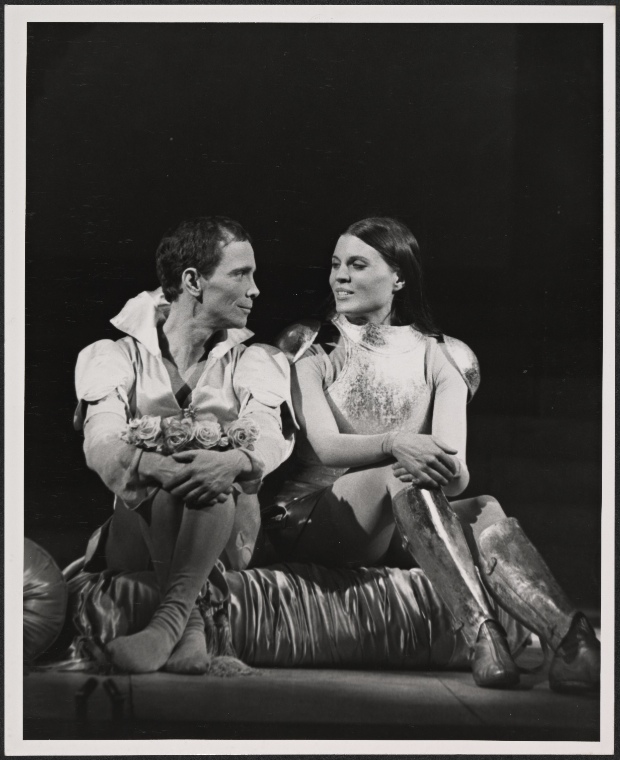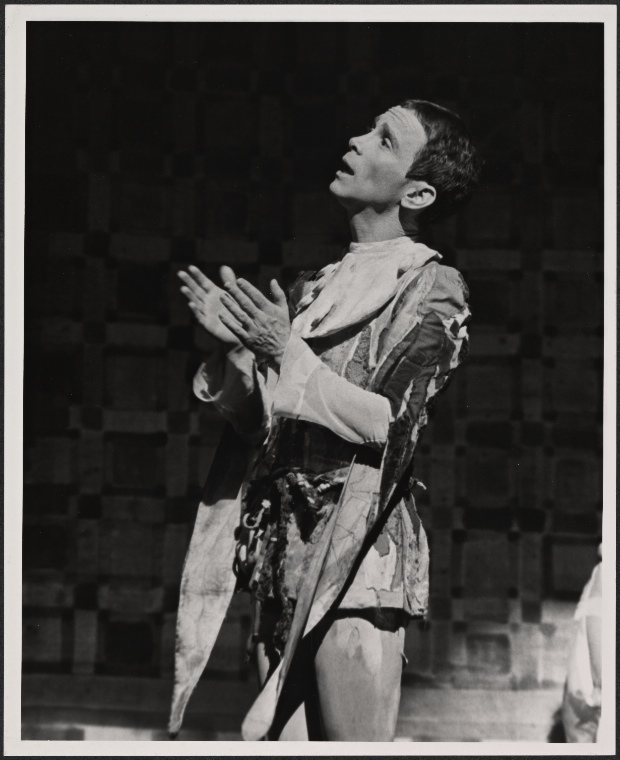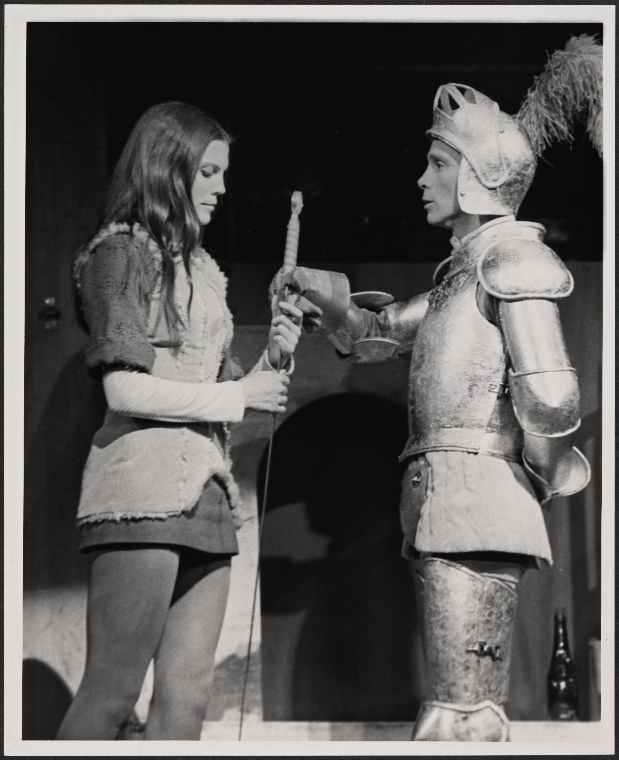Archives
The Lost Musicals: Joel Grey's Star Vehicles, Part One: "Goodtime Charley"
 I recently processed the papers of one of the musical theater's greatest stars, Joel Grey. His Tony and Oscar winning performances as the bizarre, androgynous master of ceremonies of a nightclub in Hitler's Berlin in Kander and Ebb's Cabaret (1966) and its 1972 film adaptation made him a star; and Grey has had a long, successful career, highlighted by hits like George M! (1968) and Wicked (2003) ; and the revivals of Cabaret (1987), Chicago (1996) and Anything Goes (2011).
I recently processed the papers of one of the musical theater's greatest stars, Joel Grey. His Tony and Oscar winning performances as the bizarre, androgynous master of ceremonies of a nightclub in Hitler's Berlin in Kander and Ebb's Cabaret (1966) and its 1972 film adaptation made him a star; and Grey has had a long, successful career, highlighted by hits like George M! (1968) and Wicked (2003) ; and the revivals of Cabaret (1987), Chicago (1996) and Anything Goes (2011).
After winning his Oscar (and, incidentally, he was up against Al Pacino, Robert Duvall and James Caan in The Godfather!) he did the Hollywood thing for a few years and received lots of praise for his performance in the dark psychological thriller, Man on a Swing (1974). In 1975, Grey moved his family back to New York to star in a new Broadway musical, which had been tailored into a showcase for his abilities and unique style: Goodtime Charley.

Goodtime Charley had plenty going for it, but the focus of the show was wrong. Maybe the whole subject was a bad idea, but the songs were certainly good. Grossman's lush and catchy melodies benefited from gorgeous arrangements by Jonathan Tunick, the defining Broadway orchestrator of his generation, who anticipated the sound of musicals in the 1970s with his work on Burt Bacharach's Promises, Promises (1968) and announced it with his work on Stephen Sondheim's Company (1970). (Tunick went on to orchestrate some of the most famous shows of the next 40 years, including many of Sondheim's.)
Goodtime Charley opened with an exciting overture, which led into an unusual opening number, "History", an efficient piece of exposition in which the ghosts of the supporting characters set the historical context for the story.

"Voices and Visions" brings Joan on stage, with a thrilling musicalization of one of the most famous stories of the Joan legend — when she arrives at court and intuits who Charley is even though he's disguised. Joan and Charley's relationship is developed with the duet "Bits and Pieces," her "To Make the Boy a Man," and "I Am Going to Love (The Man You're Going to Be)" and his "Why Can't We All Be Nice." Their antagonistic duet for the scene after Charley's coronation, "You Still Have a Still Long Way to Go" is one of the show's best.
One of the score's gems, "Merci, Bon Dieu," a melancholy charm song with a beautiful melody and touching words, was given to minor characters: Charley's mistress, Agnes Sorel and Minguet, an elderly page.
The show's musical highpoint is Joan's eleven o'clock number, "One Little Year," an angry power ballad for Joan to sing as she waits in vain for Charley to break her out of jail. The cast album is worth checking out just to hear Reinking belt the pants off this number.
Grey also got his own eleven o'clock number, "I Leave the World" for Charley 30 years later, now the good King Charles VII, on his 58th birthday. In this lovely song, Charley wonders if he has lived up to Joan's expectations. (Goodtime Charley's book fudged history a bit to make Charley totally blameless in Joan's conviction and burning. Don't ask how...) Then he is visited by Joan's ghost and receives her blessing and approval. A handwritten copy of the sheet music, signed by Grossman with a dedication to Grey "With thanks and love," dated opening night, suggests that this song was written for him.
The show tried out in Boston, and Grey's correspondence from this period makes it clear that extensive revisions were made. Then it opened on Broadway, and Grey received the usual good luck telegrams from friends and colleagues. I always enjoy reading these, so I thought I'd quote from a few: Director/choreographer Bob Fosse (who had directed Grey in the film of Cabaret and stepped in to give some unofficial help on Goodtime Charley) wired: "Even when you do the steps backwards you are terrific." Cabaret songwriters Kander and Ebb chimed in with "Dear Joel, Long live the King! Love, John and Fred."

Ultimately, Grey's stardom was one of the major problems and the saving grace of the show. The producers of the show knew that in Grey they had a bonafide Star with a capital S, and the show needed to be advertized with him in the star part. But any time Joan of Arc is involved, she's going to dominate the proceedings. Ethan Mordden summed it up perfectly in One More Kiss: The Broadway Musical in the 1970s when he said, "Charles VII was not an admirable or even interesting character — he lacked just about everything — whereas Joan was so amazing that if she lived today she'd still be ahead of her time." So even though Grey was the star and gave by all accounts a wonderful performance, Reinking had the better character and the better songs.
Grey gave the show a boost, to the extent that his performance and star quality was one of the only things anyone liked about the show. It created a disadvantage though. When Grey had to leave the show after only a few months, to fulfill a previously contracted obligation to appear in Robert Altman's film, Buffalo Bill and the Indians, or Sitting Bull's History Lesson (1976), the producers decided to close the show, partly because they knew they couldn't replace Grey. Also it wasn't doing that well at the box office.
There have been concerts and revivals of Goodtime Charley — it was done at San Francisco's 42nd Street Moon in 1996, at The York Theatre's Musicals in Mufti Series in 2008, and presented by the Beautiful Soap Theatre Collective in 2011. Enjoyable as these scaled-down productions are, we'll never see it done on the scale of the original again, with a full orchestra, with those elaborate sets and costumes, and most of all, with its original stars.
For more on Goodtime Charley and Joel Grey, check out the Joel Grey Papers in the Billy Rose Theater Division of the New York Public Library. Tune in next month to read about Grey's next flop: The Grand Tour.
Read E-Books with SimplyE
 With your library card, it's easier than ever to choose from more than 300,000 e-books on SimplyE, The New York Public Library's free e-reader app. Gain access to digital resources for all ages, including e-books, audiobooks, databases, and more.
With your library card, it's easier than ever to choose from more than 300,000 e-books on SimplyE, The New York Public Library's free e-reader app. Gain access to digital resources for all ages, including e-books, audiobooks, databases, and more.
If you don’t have an NYPL library card, New York State residents can apply for a digital card online or through SimplyE (available on the App Store or Google Play).
Need more help? Read our guide to using SimplyE.


Comments
Grey area
Submitted by Lee (not verified) on May 25, 2012 - 10:00am
Rouben Ter-Arutunian...
Submitted by John W Lowell (not verified) on October 6, 2018 - 7:27am